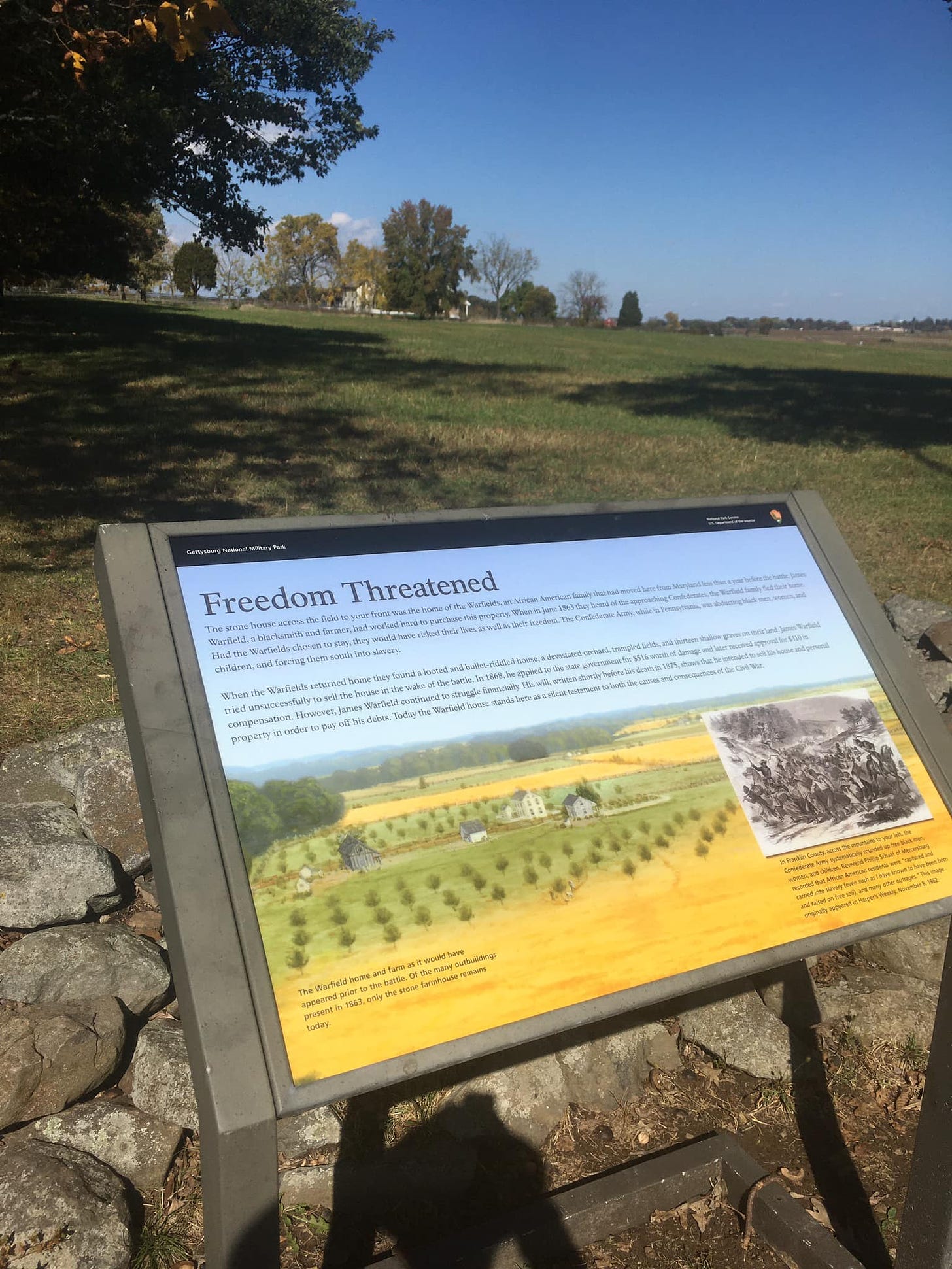Earlier this year I commented on a new interpretive panel that was placed on the Gettysburg battlefield at the North Carolina monument. This is a welcome addition to the battlefield. It will introduce to many visitors the place of memory in shaping our understanding of both the battle of Gettysburg and the broader war.
I am pleased to share that a new panel has been placed near the Warfield House—one of a number of free Black landowning families in and around Gettysburg. This one explores the displacement of African Americans in respsonse to the advance of the Confederate army into the free state of Pennsylvania in the summer of 1863.
Hundreds of Black families were forced to abandon their property rather than risk being kidnapped by Robert E. Lee’s men.
As the panel indicates, however, many African Americans in south central Pennsylvania were not so lucky and were rounded up and sent south.
These new interpretive panels are incredibly important. This particular panel is located very close to many of the Confederate monuments along Seminary Ridge. For visitors it is a reminder that the story of the Warfields and the experience of African Americans generally during the battle and campaign are just as important as the story of the actual battle itself.
It is now literally part of the landscape.
Abraham Lincoln consecrated the ground of the new cemetery in November 1863 and used the occassion to remind Americans of just what was at stake in the war, but the Warfields and the rest of the African-American community in and around Gettysburg needed no reminder.





This is an important step to bringing the emancipation legacy of the war to the fore of Civil War battlefields. Need much more of this.
This is excellent. I always remember hearing you once talk about the soldier in the NC state monument pointing off into the distance, and the irony that he is pointing almost directly at where the Bryan farm stood. Every time I visit, I remember that and share it with whomever is standing close.